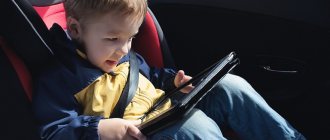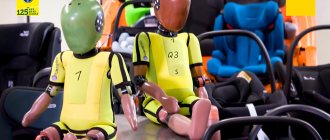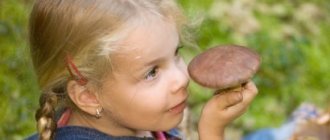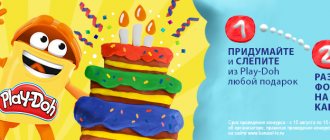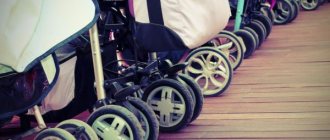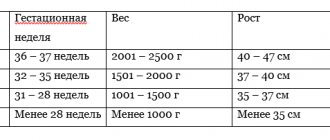This educational system has not only stood the test of time, but has acquired numerous followers. Currently, almost all countries have Montessori kindergartens, which educate millions of children from 1 to 6 years old.
The significance of Dr. Montessori’s educational ideas is evidenced by the fact that Unesco included her name in the list of teachers who determined the development of world education in the 20th century, by the way, along with the domestic writer Anton Makarenko.
What is the reason for the popularity of Maria Montessori's system? First of all, in a completely new approach to the child, who was recognized as a unique personality, and therefore required an individual approach to reveal his potential.
Early development methods are presented in more detail in another article by a child psychologist. Find out the most popular and widespread educational systems for children from birth to three years.
First in everything
Maria Montessori was born in 1870 into a famous Italian aristocratic family, which, however, was distinguished by liberal views. That is why mother and father tried to give little Maria the most progressive education.
Academic years
The future author of the educational system studied excellently, demonstrating particular success in the exact sciences.
At the age of 12, Maria entered a school with a technical focus, although before that only boys studied there. In 1890, she again became an unwitting destroyer of the current situation when she entered the Faculty of Medicine at the Roman Institute.
After 6 years, having successfully completed her studies and defended her final thesis in psychiatric science, Montessori became the first female doctor in Italy.
While still a student, Montessori worked part-time at a university clinic, where she first encountered children with insufficient intelligence. After studying the available literature, the girl decided to develop her own system for teaching children with developmental problems.
Major milestones
Naturally, the path to creating a breakthrough educational system for that time was not too smooth. However, brilliant education and natural perseverance helped Maria Montessori cope with all the difficulties.
The main stages of the “pedagogical” biography are presented below:
- 1896 - Montessori works with children who have disabilities, preparing them for admission tests to general education schools. The results of the “sick” children were stunning;
- 1898 - a woman gives birth to a boy out of wedlock and gives him to a foster family. In the same year, she heads an institute that deals with the education of problem children;
- 1904 - Montessori heads the department of anthropology at his alma mater. Along the way, she experiments in the educational process, conducts various research;
- 1907 - the teacher creates his own school called “Children’s Home”. It is in this educational institution that she tests her future educational methodology;
- 1909 - Maria Montessori begins to hold international readings, which attract teachers from many countries. In the same year, she published her first works, in which she described the principles of her educational system;
- 1913 - the author takes his son from a foster family. Relations between them improve, subsequently Mario Montessori becomes her assistant and popularizer of the ideas of his famous mother;
- 1929 - The World Montessori Association is created, which includes teachers from many countries. In the USSR, the method of the famous Italian teacher did not find a wide response.
Having lived in India for 7 years due to the difficult military situation at home, in 1946 Montessori returned to Europe and stopped in the Netherlands. In 1952, the famous teacher dies, but her son Mario continues her work.
Maria Montessori's method was not particularly famous in the Soviet Union. The situation changed only in 1998, when the author’s granddaughter Renilda introduced Russian teachers to a promising educational system.
Montessori environment
Creating the right, structured environment is a prerequisite for the existence of the Montessori teaching method. Without it, it is impossible to build a pedagogical process using this methodology. It presupposes the presence of certain zones in which there is everything for gaining experience and knowledge in a particular field.
Practical life zone
The practical life zone allows the child to feel like an adult in everyday life. Here he can learn to wash dishes, sweep the floor, do laundry, and care for dolls, plants and animals. To organize this area, you need indoor plants, busy boards, tablecloths, dishes, various household utensils and safe office supplies.
Sensory development zone
The main task of this zone is the development of fine motor skills and sensory perception. Here thinking and memory develop, the first acquaintances with shape, color, temperature, weight and size occur. This zone includes a wide variety of objects that have different properties for perception by the senses: balls, balls, bags, scented and flavored jars, objects of different shapes and sizes.
Math zone
The area that develops mathematical concepts gives the child the first knowledge about numbers and operations with them. Mathematics here is studied through concrete physical forms that can be seen and touched - children gain knowledge in this way much easier than on the basis of theoretical explanations. This area contains various geometric figures and shapes, numbers made from various materials and counting objects.
Speech zone
This is an area for replenishing vocabulary and teaching a child to read and write. The first acquaintance with letters occurs in tactile form. Large letters made of different materials that attract children's attention are easy to move and form into words.
Space zone
This zone contains various objects that help children understand the surrounding nature and gain basic knowledge about the natural sciences. Here you will find models of planets, figurines of plants and animals, and sets for conducting various experiments.
The location of zones in space and objects in the zones themselves is the most important condition for the functioning of Maria Montessori’s pedagogical methodology. The more relevant an activity is for a child, the more prominent a place it should occupy in the environmental system.
What is the Montessori method?
As already mentioned, the educational method was initially tested on children with insufficient intellectual development. Having created a special developmental environment, Montessori saw its main task as instilling in such children self-service skills and adaptation to society.
Despite the fact that the teacher did not have a goal to increase intelligence, the results of the training were unexpected - within a few months the children caught up and even in some situations surpassed their healthy peers.
After summarizing the theoretical developments of other scientists and her own experiments, the Italian teacher created a unique method of child development, which was named after her.
Very soon, the method of Dr. Maria Montessori was introduced into the education of children with a normal level of mental development and also gave impressive results.
What are the features of the Montessori system? The main difference from other developmental methods was formulated by the author at the beginning of the 20th century: the child must be guided towards independence.
Teachers and parents should promote independent child behavior and help only in cases where the child himself asks for it. In addition, it is prohibited to force children to perform any activity.
The general humanistic ideas of the Montessori method are:
- a child is a unique personality from birth;
- all children have an innate desire to work and develop;
- The task of adults is to reveal children's potential, and not to lead;
- the child learns about the world on his own, and parents and teachers only give suggestions, waiting for the child to take the initiative.
Thus, the Montessori method to a certain extent became revolutionary for that time. With some changes, it has survived to this day.
Montessori Limitations
Although the child is given the chance to freely explore everything around him, he is fixated on the didactic material. A toddler can learn everything available in a few months, but what to do next, after interest in a rather monotonous program has disappeared, is unclear. The technique does not answer the question posed.
Before going to school, it is imperative to go through a separate preparatory stage, which allows the child to gradually adapt, because the moment of transition from a free environment to the traditional school system, in which there are desks and a teacher is always nearby. At first it is difficult to get used to the strict schedule and other features of training.
The essence of the Montessori method
The teaching methodology of the famous Italian doctor is based on the idea of raising children independently. This idea is also emphasized by the motto of the developing Montessori school: “Help me do it myself.”
The goal of the entire educational process is to provide the child with freedom of action and organize the developmental environment in such a way that the child can achieve the best results on his own, without much adult intervention.
The following are strictly prohibited in the Montessori system:
- compare children with each other;
- apply the competitive method in education;
- evaluate the child in accordance with generally accepted standards;
- use praise and punishment;
- force someone to do something.
All these methods, standard for other educational systems, are ineffective, Montessori believed, because:
- the child himself wants to grow up in order to feel like an adult;
- mastering knowledge and gaining life experience is a natural task for a child;
- providing freedom (under the supervision of a teacher and parent) disciplines children;
- Studying is a way to gain knowledge and become an adult, so a child does not need to be forced to study.
That is why a child in a Montessori school can independently choose:
- speed of knowledge acquisition;
- duration of the lesson;
- nature of educational materials;
- progress and directions for self-improvement;
- environment.
What is required from adults in this case? Teachers and parents should do their best to:
- improve and in every possible way nurture children's independence;
- respect children's choices;
- organize a developmental environment that would be comfortable for the child;
- Observe and assist as needed.
It is in these moments that the essence of the Montessori method lies. In a nutshell, teachers and parents create a certain ordered environment, and the child develops within the framework of this structure, but independently, at his own pace, according to his own needs and capabilities.
Why is it worth starting Montessori classes from infants?
We believe that incorporating Montessori principles into life can begin from birth. After all, you can already do so much for a newborn: interact correctly with the baby during care, feeding and before bed, talk to him, understand his requests, and also organize a comfortable space for him to grow and develop.
The first thing to remember is that children unconsciously absorb everything they see and feel, this is how their brain works. They have not yet developed voluntary attention or memory, therefore, they do not control what they remember, be it good or bad. This means that it is your task to create a decent environment for development: surround your baby with beauty, care, respect and love.
In the first months of life, a lot of unconscious beliefs are formed about oneself and about the world: is the world around me safe, do those around me love me, am I important to them. In order for the basic picture of the world to develop positively, talk a lot with your baby, be attentive to his physical needs, respect his body and desires.
System principles
As the author of the method herself said, the child does not need to be taught anything special, it is enough just to see a person in him. Children themselves realize their abilities and capabilities; for this they need to be placed in a prepared environment.
Based on the above, Maria Montessori identified three main “participants” in the development process:
- the child is located in the center;
- there is an environment around it;
- The teacher is located next to (and not above).
To ensure that children develop optimally, Montessori also formulated the basic principles of learning.
- Individuality. The most important rule for constructing the educational process is the individual development of all children. The teacher is required to help the child realize his maximum potential.
- Self-correction. Individual development also involves independent correction, when children themselves must notice their own mistakes and, if possible, correct them.
- Personal space. This principle implies not only an awareness of one’s own position in the group, but also an understanding that every object has its place. This allows you to unobtrusively convey to the child knowledge about order.
- Social interaction. The author of the methodology proposed forming groups of different ages, in which the youngest receives help from older children. This allows children to instill caring for loved ones.
- Life experience. You can develop a child with the help of real household items. By interacting with them, children learn to fasten buttons, set a table, wipe off dust, etc. That is, the baby receives life experience from an early age.
It is impossible not to note another important principle - control over errors. This rule applies automatically when the child interacts with objects. For example, after spilling water on the floor, the baby understands his own awkwardness and strives to correct it on his own.
Montessori material
The peculiarity of the method lies in the control function during events with a tool that allows the child to see his mistakes. For example, if the cylinders are incorrectly positioned or the holes do not match, the toddler understands that he has performed an incorrect action.
The design principle can also be partially transferred to household items: jars with lids, fasteners, boxes, clothespins, food. All this is available to children with some parental control.
It is imperative to take into account that the material in a Montessori environment must be located only on shelves or in open chests of drawers, and no higher than the child’s eye level. This way it will be more convenient for him to calmly and unhinderedly approach what interests him and take it without tension.
Developmental environment
A properly organized environment is a key point; without it, the educational system itself will not be able to function.
It is the surrounding reality that contributes to the independent development of the child through the use of all senses.
For those parents who decide to create a similar developmental environment at home, information on how to make Montessori materials with your own hands may be useful.
Also, active mothers and fathers should definitely read how you can make a busy board with your own hands at home.
The basic rules for organizing the environment are as follows:
- Tables and chairs, and other equipment must be selected according to the child’s age and height, since the child must rearrange the furniture himself to suit his own needs. The teacher is only required to say that this must be done quietly.
- The study room should be spacious, bright, with free access to fresh air. Teachers and parents need to think about optimal lighting and ensure the presence of daylight.
- Wall decoration should be calm so as not to distract children from their immediate work. Montessori recommended including fragile things in the interior so that the child would quickly learn to use them and realize their value.
- It is important to provide free access to water. Many activities are based on the use of water: for example, pouring it from container to container. In addition, self-training in hygiene skills involves installing sinks and toilets at an accessible height.
- Educational materials must be placed at child eye level so that the child can work with them without the help of a teacher. All benefits must be presented in a single copy so that children take into account the needs of their classmates.
An important rule for using benefits is that the one who took them first works with them. In this way, you can unobtrusively cultivate in children the ability to negotiate, exchange and interact.
Advantages of the Montessori system
One of the main advantages of Montessori pedagogy is the child’s high level of independence in everyday life and cognitively. The second is the development of a free personality: the child is not forced to do anything, someone else’s point of view and someone else’s experience are not imposed. Multi-age groups allow you to learn how to interact with people of different ages: help older people, care for younger ones. And another advantage of the classic Montessori method of child development is a huge variety of aids, games and toys in which every child can find a favorite activity.
Zoning of premises
In order for a child’s development to meet his needs, it is necessary to properly build the developmental environment - for example, divide it into functional zones.
In the author’s version, it was proposed to divide the room into five zones: practical skills, sensory, mathematics, language, and space. Nowadays it is customary to supplement them with other areas - for example, physical activity.
Real life zone
It is also called the practical zone. The main task of the materials found here is to accustom the child to everyday living conditions and develop hygienic skills.
Manuals and activities in the practical area help the child learn:
- personal care (cooking, dressing and undressing);
- caring for the surrounding area (watering flowers, feeding pets, cleaning);
- different methods of movement (the ability to move silently, walking along a line, etc.);
- communications (communication with the teacher and peers, behavior in society).
In the real life zone you should use the following materials and aids:
- “smart boards” or busy boards (wooden boards with fasteners, buttons, straps, locks, etc.);
- containers for pouring water;
- house plants in pots;
- cut flowers;
- scissors;
- dustpan with broom;
- watering cans;
- tablecloths;
- stripes (they are glued or drawn on the floor) on which children walk, carrying various objects, for example, a mug of water.
The materials in the practical area that the child uses must be real. Toys are not welcome in this case.
Sensory area
This developmental area consists of aids that help improve fine motor skills, vision, touch (differentiation of temperature indicators), and hearing. The “pressure” sense also develops - the skill of distinguishing objects by weight.
The sensory zone includes such aids as:
- color plates (to distinguish shades);
- various nesting cylinders, pink tower, red rods (for sizing);
- tablets with a rough surface, various pieces of fabric, a board with keys (for tactile learning);
- noisy cylinders, bells (for hearing development);
- “magic bags”, geometric shapes, sorters, a biological chest of drawers containing insert frames (for determining the shape of objects);
- heavy and light signs (to distinguish weight);
- scent bags (for olfactory learning);
- jars with different flavors (to improve taste);
- warm jugs (to differentiate temperatures).
These are not all the materials available in the sensory area. An important rule when selecting developmental aids is that they must focus on a specific sensory organ in order to divert children's attention from other characteristics.
Math Zone
Mathematics and sensory are related to each other. For example, a child, comparing materials with each other, simultaneously measures and organizes them, that is, carries out mathematical operations.
But if various cylinders and turrets only prepare children for mathematics, then specific aids allow children to directly master mathematical concepts.
To work in the math zone you will need the following materials:
- wooden rods in which red and blue parts alternate;
- numbers that are made of rough fabric or paper;
- cards with numbers “find neighbors”;
- spindles;
- numbers and red circles for visual acquaintance with numbers;
- rulers, meter tapes;
- gold beads that allow you to master basic mathematical operations;
- circles cut into shares for familiarization with fractions;
- geometric chest of drawers introducing children to geometry.
Thus, in this zone, textbooks have been selected that allow you to develop logic. With the help of visual and concrete materials, the child more easily masters complex mathematical concepts and actions.
Language zone
In this area there are also benefits aimed at developing sensory and fine motor skills. Various cylinders, rough letters, noise bags and boxes indirectly affect the formation of speech skills.
Benefits in the zone are aimed at developing correct speech, improving language skills, expanding active and passive vocabulary, preparing for writing and reading.
The following materials will help you develop your speech and learn to read and write:
- various inserts,
- rough letters,
- movable alphabet,
- pictures with different objects,
- special frames for shading,
- boxes of cards for so-called intuitive reading,
- books.
He selects reading books for all ages to meet the needs of each student.
Space zone
In another way it is called the zone of natural science education. Here the child gains knowledge about the world around him, about the connections between various objects and phenomena. Children will also learn the basics of history, botany, zoological and geographical sciences.
This area is equipped with the following materials:
- children's reference books and encyclopedias;
- geographical and natural maps;
- model of the solar system;
- typology of animals;
- plant typology;
- seeds and leaves of the plant;
- calendars;
- experimental aids to conduct a variety of experiments.
Experiments should be simple and safe for the child. However, even in this case, all items must be real. For example, a popular experiment is with iodine and bread to determine starch.
Additionally, there are zones for music, art, dance, learning foreign languages, and physical activity. Such in-depth zoning contributes to the all-round development of the child, but there is not always enough space for such zones.
Maria Montessori's method of early childhood development
Elena Bochegova
Maria Montessori's method of early childhood development
Maria Montessori is a famous Italian teacher. An entire pedagogical direction was named in her honor - “ Montessori pedagogy ”
.
Montessori based her pedagogy mainly on the development of children's motor and sensory skills, as well as the development of children's writing, reading and counting skills . The basis of the Montessori method is that every child is unique. The basis of its pedagogical theory is made up of three elements: the child, the environment, the teacher. The central element is the child independently exploring the world (environment)
.
The role of an adult is to observe the child’s self-development and help him. According to the Montessori method, it is the child who is given the opportunity to develop and move, but if the help of an adult is required, then he receives it. The function of the adult is to organize the environment for the child in which this independent movement occurs. The main principle of the Montessori method is to push the child towards self-education, self-development , and self-learning. “Help me do it myself”
is the main motto of the pedagogical theory of M.
Montessori . The child’s desire to explore the world, to perform specific actions at a given moment in time, to show independence - only this should be taken into account. Until the baby picks up a spoon himself, he will not learn to eat on his own. Until a child laces a huge number of shoes and unfastens hundreds of buttons, he will not learn to do this. Montessori proposed turning this process into an exciting game, creating a large number of educational toys for all ages. In the selection of such manuals, M. Montessori relied on the principle of consistency: from simple to complex, from concrete to abstract.
The child received free access to all such toys and chose what to do, how much time to devote to this activity, and who to ask for help in doing it. From the moment of birth, the baby strives to gain new knowledge, and the objects around him should help in this endeavor. Montessori conventionally divided the life of a child into several periods in which the child is most receptive to certain things, sciences, practical actions and in which the child develops one or another part of the brain. For example, according to the conditional division of Montessori speech development occurs between the ages of birth and 6 years (that is, during this period the baby most easily learns to speak, and between the ages of birth and 3 years the child is most receptive to order; this is the period of the most active interaction with adults , the most favorable period for learning to read is from 3 to 5.5 years old. Adults must take into account these age-related features of children's development and use them for teaching. In order to understand how a child is realized and approved, Montessori insisted that any child is still from birth has its own inner germ (or “spiritual embryo”
) and that only in the process of
development can this embryo be revealed and realized. For the development process itself, Montessori considered it mandatory to fulfill the conditions listed below.
The child and his development are completely dependent on the environment and are in constant contact with it.
The learning environment is objects, things, aids, practical skills that can be obtained with the help of these objects . For example, jugs, cups, spoons, all kinds of cereals. With their help, the baby learns to pour water from a jug into cups, spoon cereal, lace shoes, and fasten buttons. Conventionally, all the benefits offered by Montessori and her associates can be divided into five zones. Zone one is practical; the second is sensory ( development of sense organs )
;
the third is mathematical (logical)
;
fourth - Russian language (humanities)
; fifth
— cosmic (knowledge about the surrounding world)
.
“Teaching means creating a developing environment ”
.
Mandatory freedom of the child. Freedom for M. Montessori lies in the fact that each individual child has his own goal, his own program for achieving it (means, time of achievement, a certain set of actions, taking into account the individual needs of the child. What to study, how to study, with the help, what aids , the child decides independently.Children studying according to the M. Montessori demonstrate such qualities as organization, responsibility, and independence.
In the absence of at least one of these conditions, the child’s capabilities and potential are not fully revealed and, as a result, the child’s growth as an individual and personality stops.
Montessori, during her practice, proved the close interaction between the physical and mental development of a child and that mental development cannot be successful without physical development .
Montessori established that each child has his own periods of development , each of which ends with the acquisition of one or another skill. If a child is delayed from the type of activity he has chosen , then the natural path of this knowledge is lost to him forever.
Montessori the first period of a child’s life as order. But it is important to remember that the understanding of order is very different between an adult and a child. For an adult, order is the fact that every thing has a specific place and is located exactly there, but for a child it is seeing things in the environment in their usual places. A child can indicate his need for order in the following ways:
- show the joy of seeing things in their places;
- cries if this or that thing is not in its usual place;
- begins to insist that the thing be put in its usual place or that the child’s usual actions be performed as usual.
According to this, we can give the following example of a child’s understanding of order: to celebrate the New Year, the mother of a 4-month-old girl put herself in order: she did her hair, put on makeup, and put on a new beautiful dress. When her daughter saw all the changes that had happened to her mother, she began to cry and refuse to go into her mother’s arms. As a result, the mother changed into her usual home clothes, which are familiar to the child. The girl immediately calmed down and went to her. For this girl, the understanding of order came down to the fact that she was used to seeing her mother in home clothes, and, seeing that her mother had changed, the girl accepted these changes as a manifestation of disorder.
The second period, which Montessori identified in the life of a child, originates in the child’s desire to explore the world around him with the help of his hands and tongue. This learning occurs on a sensory level. When a child uses his own language, that is, the words that the child uses to talk, and the use of various movements that the child makes in one case or another, his intellectual development . Observing these two processes, Montessori came to the conclusion that it is speech and hands that play an important role in the development of a child’s intelligence . At the same time, to develop fine motor skills of the hands, Montessori advised stringing beads, pouring water, pouring cereals, etc.
The third period development is the period of walking. According to Montessori , this period is comparable to the second birth, that is, from a helpless but And finally, the fifth, final period of development from birth to 3 years includes the child’s interest in social manifestations of life, such as communication with other children, joint activity (game)
,
etc. d. According to Montessori , the brain of a child from birth to 3 years is comparable to a sponge that absorbs absolutely everything from the surrounding world. This process continues until the age of 3, and only at 3 years is the child absolutely ready for intellectual development .
Intellectual development of the child , stimulation of cognitive interest is the most important task in the development of the baby . M. Montessori developed a system of intellectual development of a child through the sensual (sensory)
cognition.
The baby, through shape, color, size, temperature, weight, smoothness or roughness of the surface, smells, sounds (various qualities
of objects ) gains knowledge about the world around him (rough letters, noisy boxes, turrets, cylinders, keys, frames with laces and buttons).
Moreover, the most important, defining quality of the object is highlighted, to which the child’s attention is drawn. For example, in order for a child to form an idea of size, the concept of “more is less”
, manipulations with cylinders of different sizes are offered.
In order to understand the concepts of shape, the child is offered classes with flat geometric shapes. To develop motor skills, Montessori recommended giving children all kinds of frames with buttons, bows, and laces.
Perhaps the controversial aspects of this pedagogical theory are the downplaying of the importance of role-playing games and reading fairy tales in a child’s life. A child learning according to the M method . Montessori , there is simply no time to play in the usual sense of the word. Fairy tales can generally be harmful, because, according to M. Montessori , a child can gain negative behavioral experience from them. Many believe that the disadvantage of the M. Montessori is the extreme individualism of the child, which may interfere in the future, where work in groups and existence in a large team will be required. And yet there is a rational grain in the pedagogical ideas of M. Montessori , and parents can take advantage of them. Today, stores offer a large variety of Montessori . These are planks (cubes)
with holes of different shapes and sizes and inserts for them. The baby selects the desired insert to the appropriate hole. You can also make manuals yourself.
"Magical"
track
With the help of this device you can develop tactile sensations . It is recommended to make such a path for a baby from 10 months. On the floor, after laying an old oilcloth or pieces of wallpaper, pour river sand, small smooth pebbles, some grains (rice, lentils, pieces of crumpled paper, pieces of fur or cotton wool, coins, a piece of some rough fabric (terry cloth) in sectors in a circle. towel)
.
The baby walks barefoot along “magic”
path, trying not to wander off to the side.
This activity not only promotes the formation of coordination of movements, but also the development of speech . It has long been known that the centers of speech development and tactile sensations in the brain are located nearby.
With stimulation of the center of tactile sensations, the speech center is also affected. Therefore, pediatricians recommend that in the summer children run barefoot on grass, sand, and sea pebbles. Sandbox
M. Montessori noted the positive impact of all kinds of activities with sand (sprinkling sand from palm to palm, building houses, roads)
for
the development of mental abilities through tactile sensations.
There is a sandbox in every yard, and in winter you can put a large box filled with clean sand in your apartment. Bags with filling
Starting from 6 months, the baby can be allowed to play with linen bags filled with grain. You need to sew several pairs of small bags, fill them with a variety of cereals, grain in pairs. For example, two with rice, two with buckwheat, two with peas. The baby’s task is to select a bag with the same filling by touch.
Shreds
This activity can be offered to children from 2.5-3 years old. Pieces of various fabrics are placed in a large basket or box: velvet, satin, silk, chintz, linen. The child, together with the adult, sorts out these scraps in their hands. The adult gives the name to these tissues, and the baby highlights the main characteristic quality: “soft”
,
“rough”
,
“hard”
,
“thin”,
etc. Then the baby is blindfolded with a scarf, he takes a piece of paper out of the box, feels it and names the material, gives it a description. At birth, the child becomes more active and independent in his movements.
The fourth period development consists of the baby showing special interest in small things and objects.
Sensitive periods of development
Sensitive periods refer to stages of development when a child can master certain skills without extra effort, with pleasure and involvement.
Unfortunately, such sensitive periods do not last very long and pass irrevocably, regardless of whether the child was able to take advantage of the opportunity to maximize his abilities or not.
If parents know about the onset of a “receptive” stage in the child’s life, they will be able to create conditions and saturate the environment with the necessary materials or means.
Main sensitive stages from 0 to 6 years
| What's developing | Age limits | a brief description of |
| Motor sphere | From 0 to 18 months | Previously chaotic movements become conscious and coordinated. The child learns to grab, crawl, walk, and perform actions with objects. |
| Sense of order | From 18 months to 4 years | The child strives for consistency and orderliness. He doesn't like disorder. Adults need to organize the environment, designating each item its place and establishing clear rules. |
| Interest in small objects | Children are keenly interested in small objects: buttons, construction kit parts, buttons on the phone, etc. | |
| Etiquette, social skills | From 2.5 to 6 years | The baby follows the example of his parents, saying hello and saying polite words. First it is imitation, then it is a personality trait. |
| Refinement of feelings | The child is attracted by various sensations: gustatory, tactile, auditory, etc. | |
| Writing skills | From 3.5 to 4.5 years | The child enjoys reproducing symbols on paper. |
| Reading | From 3 to 5.5 years | Kids are interested in letters and try to read words on their own. |
| Speech skills | From 0 to 6 years | The child goes through the stages of language development: babbling speech, short words and phrases, sentences. |
| Musical skills | From 18 months to 6 years | Children are keenly interested in music; this is a favorable period for the development of an ear for music and a sense of rhythm. |
| Space-time relations | From 4 to 6 years | The child develops ideas about space: he recognizes places, knows how to find his way, and orients himself in the space of a landscape sheet. |
| Math skills | The baby gets an idea of quantities, numbers, and mathematical operations. |
Create the conditions!
For your child, everything in this world still seems huge: chairs, cabinets, tables, beds. He is like Gulliver, who found himself in the land of giants. Is it possible for him to learn something this way? Here every little one feels lost and helpless. Your task is to correct this and create an accessible environment for the child, so that everything he needs for a full life is nearby. We will create special zones for this.
For the harmonious and proper development of babies, several zones are needed that fathers and mothers can create themselves:
- an area of everyday life in which he will have access to everything he needs daily (hangers for clothes, towels, toothpaste, soap, etc.);
- a language development zone, which may contain bright books, cubes with letters, pencils, paper, numbers and letters cut out of thick paper;
- a creativity zone in which the child will have paints, musical instruments, plasticine, pencils, paper and everything that is needed for children's creativity;
- natural science zone, here you need to put everything that will tell the child about the outside world: figures and pictures of animals, flowers, different liquids, objects with different temperatures, etc.;
- a zone of sensory development, in which the baby will be greeted with objects of different shape, content, smell, and structure. These can be cubes, cylinders, cereals, various fabrics, etc.;
- an activity zone, which can become a children's sports corner.
All these zones do not take up much space, do not interfere with normal life and will fit even in a small semi-detached or studio room. Simply put, zones are properly arranged children's things and toys. And now first things first!
At what age can the Montessori method be used?
It is not for nothing that Maria Montessori’s early development method has the word “early” in its name. The author herself believed that it is necessary to begin preparing for a child’s education even before his birth.
It is the parents’ firm decision to become familiar with the principles of the developmental system and the desire to put it into practice, including creating an optimal environment at home, that is almost half the success.
Nido-groups
During the newborn period, the child and mother are extremely dependent on each other, which is why their separation is undesirable. And the baby, for physiological reasons, is not yet very interested in the world around him.
By the age of three months, the baby becomes more active, showing a lively interest in the surrounding reality. Already from the ninth week, some development centers working according to the Montessori system invite mothers with babies to nido classes (translated from Italian as nest).
However, such “activities” are rather useful for the woman herself, since they allow her to forget a little about her numerous household chores and diversify her leisure time. Such a small child does not yet need to attend a nido class, since the necessary early development can be provided at home.
As soon as the baby begins to crawl (usually after 7 months), you can already purposefully attend a Montessori group. This option is possible if the mother wants to begin the early development of the child, but does not have the opportunity to create a suitable environment at home.
Toddler groups
As soon as the child begins to walk actively (usually at one or one and a half years), he is transferred to a toddler group (translated from English as an independent child). In domestic Montessori centers, this is the name given to classes for children’s adaptation to kindergarten.
A visit to such a class expands children's opportunities, since a child from 1.5 to 3 years old:
- becomes more independent and independent;
- learns to communicate and build relationships with unfamiliar adults (educators);
- acquires self-care skills (learns to dress and undress, lace up, unfasten buttons, etc.);
- learns to use scissors, a hammer, a brush;
- begins to clean the room (elementary actions - sweeping and dusting);
- learns to communicate with peers, understands the rules of working in a team.
There are different options for attending a toddler group: full day, half day, or attending classes only a few times a week. It all depends on the characteristics of the child and the financial capabilities of the parents. In addition, the Montessori method can be implemented for children 1–3 years old at home.
Thus, attendance at Montessori groups begins at two months of age, if the mother needs it. But a toddler class can really be useful for the development of a child under 3 years old and his adaptation to kindergarten.
The main classes are carried out with children from 3 to 6 years old. This is not surprising, since it is at this age that children experience the main sensitive periods for acquiring knowledge and skills.
Child development up to one year according to Montessori: from 6 to 9 months
Around this age, the child begins to sit, which means he has much more opportunities to manipulate objects that must be used.
- Spinning drum
A toy from a classic Montessori set that perfectly develops a child’s discretion and coordination and teaches him to perform various actions with objects. To make the toy even more attractive, choose a model with a mirror in one of the sections. It is worth starting to offer such a toy when the baby can already hold himself in his arms, lying on his stomach and will be able to free one hand for play, and it will be at its peak at the moment when the child has learned to sit.
- Wooden rings on a stick
A very simple Montessori pyramid gives the child a huge field for experimentation: how to remove the rings from a stick and how to return them to their place, what will happen if you turn the pyramid over or throw it.
- Egg in a cup
A wooden egg in a cup also gives the child more knowledge about the interaction of objects. The egg can be taken out of the cup and returned to its place, and this is a whole discovery for the baby
- Simple inset puzzles
Wooden insert puzzles of the same shape become the first toys for logic. The baby will have to find its place for each insert, and then pull everything out of the grooves again. An excellent challenge for coordination and control of hand movements. Don’t expect that your baby will be able to select the right shapes already at this age; now it is important for the child to simply master grasping objects and learn to pull them out
- Musical toys
Rattles, tambourines, and bells on a stick are great for kids this age. Let your baby explore the sounds these objects make
- Baskets with items
Sets of animal figurines (with natural colors and proportions), a selection of kitchen utensils (whisk, beater, spoon). It is important for your baby to get acquainted with different shapes and textures, even if he does not understand the meaning of these objects yet, he will certainly enjoy turning them over with his hands.
By the end of this period, you can already begin Montessori classes “Together with Mom”
Main types of lessons in Montessori classes
It is curious that Maria Montessori referred to the interactions of children with benefits, peers and adults not as games, but as activities or lessons. She also did not use the word “toy” in her speech, calling educational objects didactic material.
In his system, the author identifies three main types of classes:
- Individual . The first type is characterized by the fact that the teacher interacts with only one child, teaching him to work with didactic material. As soon as the baby shows interest in the manual and understands the meaning of its structure, it is necessary to move on to independent activity.
- Group. Teachers work with children who are at approximately the same level of development. Other children do not interfere with the group, working individually. The purpose of the lesson remains the same – learning how to use manuals.
- Are common. The teacher works with the whole group at once. The classes are quite short. As soon as children receive information, they either move on to independent work with didactic material on this topic, or do other things.
It should be understood that kindergartens and schools traditionally organize children's groups of different ages. The child moves to the next level when he fully realizes his current needs.
The pace of acquiring knowledge depends only on the child. No one will rush him, allowing him to study in his own individual mode.
The child must build relationships with other children himself, while teachers monitor and provide assistance as needed.
Organization of lessons
The Montessori method involves 3 types of activities.
- Individual. The teacher offers educational material to one or 2-3 children and demonstrates, without lengthy explanations, the possibilities of its use. Such material should arouse interest in the baby, have some bright distinctive property, and make it possible to check whether it performed the action correctly. Then the child or children work with the material independently. When conducting such a lesson, the teacher’s other children do not ask for anything.
- Group. They involve children who have reached approximately the same level of development. The lesson plan is similar to the previous one. The rest of the children in the class study without a teacher.
- Are common. The whole class participates in these lessons. These are classes in general subjects - history, music, gymnastics. Such lessons are usually short, and then the children again decide for themselves what and where to do.
Studying according to this system, children move from one class to another. But when they should do this is determined by the capabilities of a particular child. That is, this is a technique applicable to both younger and older ages. In such classes there are no specific goals for each year; children study at their own pace. One of the main rules here is not to disturb others. That is, behave quietly, do not take away benefits, do not interfere with someone who is studying alone in some area, and be able to properly build relationships with other children.
Advantages and disadvantages of the technique
Despite the universal recognition of the Montessori system and its prevalence, not all teachers and parents consider this method to be really effective and useful for the development of the child.
It is necessary to consider in more detail all the advantages and disadvantages of this developmental methodology.
Advantages
Among the advantages, experts note several important points:
- the child’s development occurs without much intervention from adults;
- taking into account the individual characteristics of children;
- independent knowledge of the surrounding world;
- providing children with freedom and independence;
- lack of criticism and punishment, as well as encouragement;
- taking into account sensitive periods in the development of children;
- great importance is attached to improving fine motor skills and developing sensory organs;
- training in groups of different ages, which teaches children to take care of others;
- rapid development of self-service skills;
- development of self-control, self-discipline, ability to work in a team;
- not mentoring, but collaboration with children.
Negative points
This technique also has certain disadvantages, which few people know about. So, the following disadvantages are highlighted:
- due attention is not always paid to improving imagination, creative and communication abilities;
- role-playing game is the main activity for a preschool child, but the author did not recognize its role in child development;
- insufficient attention is paid to fairy tales that unobtrusively introduce children to the world around them;
- It is difficult for children to move to a new level of interaction with the teacher when entering a regular school, because of this there may be difficulties with adaptation;
- lack of physical activity in classes;
- the absence of strictly regulated activities can play a cruel joke on the child, since he will continue to work at will.
Due to constant criticism, many centers and schools abandoned the Maria Montessori system in its pure form. Teachers are constantly improving the methodology, adding their own personal developments to it.
Thus, training using the Montessori method is distinguished by its originality, unusual content and certain advantages. If you like any aspects of this early development system, be sure to take them into your arsenal. The child will only thank you.
Music and the human voice
Montessori-made bells are on display to introduce children to music. They represent sensory material that harmoniously and naturally opens the ear for music, regardless of whether the child is destined to be a musician or not.
When using bells, introductory exercises are used aimed at mastering speech, which concentrate the student’s attention on distinguishing “modulations of the human voice.”
Montessori bells
Exercises also teach the child’s ear to perceive various noises, to catch the lightest rustles, to distinguish them from sounds, and to be averse to sharp and discordant noises.
Such education is also valuable because it fosters aesthetic taste and highly contributes to the development of discipline in practical life.
Disadvantages of the Montessori system
The Montessori method is not ready to accept children with hyperactivity: it will be too difficult for them to remain quiet, not disturb other children and study calmly. Groups of different ages do not always function well; children often cannot find common interests; the strong offend the weak. In the Montessori method, there is no role-playing game, which is the leading activity of preschoolers. In addition, it practically does not involve creativity - you can only learn what is, and not create something new.


